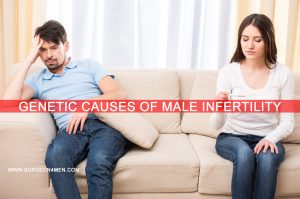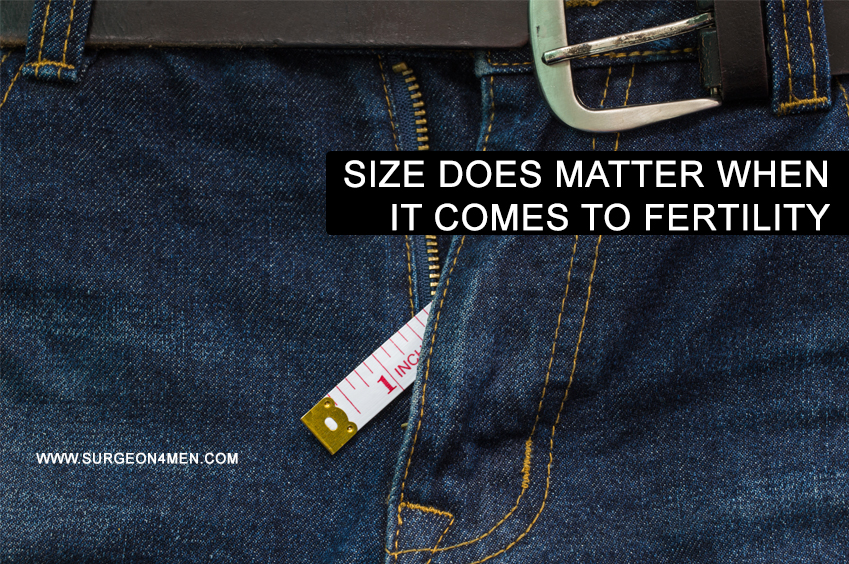Size Does Matter When It Comes To Fertility
Around the globe, men are obsessed with the size of their penis, since there is a common perception that bigger size is indicative of higher fertility and masculinity. But investigators and healthcare providers have always stressed on the fact that penis size is not the absolute measure of male fertility and men with smaller size penis are as likely to impregnate their partners as males with average-sized penis.
But Does Size Really Matter?
According to a new study published in the peer reviewed journal Environmental Health Perspectives, investigators suggested that size does matter, but not in terms of the penis length. Conventional methods for testing fertility are invasive and uncomfortable but this research is expected to provide some valuable insights in the anatomical role of sizes via easier methods such as tape measurements for AGD.
What Is AGD?
Research team lead by Swan coined the idea of AGD – the distance between the anus to area underneath the scrotum i.e. anogenital distance (or AGD). The average length of AGD is 2 inches. The author of this study, Shama Swan, a reproductive epidemiologist and professor of Obstetrics and Gynecology at the University of Rochester, suggested that anogenital distance is directly proportional to the volume of semen and sperm count.
The researcher also suggested that men with shorter AGD lengths are seven times more likely to face fertility issues when compared to those who have longer AGD. This is mainly because shorter AGD is associated with lower sperm count. Various research studies have highlighted that men who have less than 20 million sperms per milliliter of semen are more prone to sub-fertility problems. In such men, the possibility of getting their partner pregnant is half to those who have sperm count of 50 to 60 million sperms per milliliter of semen.
What Are Some Classic Causes Of AGD?
Investigators very strongly believe that AGD is the key parameter to determine the fertility in men, but most researchers are unable to determine why some males have shorter AGD. Some studies explored the possible risk factors and identified that ladies who are exposed to phthalates (a class of chemical, commonly found in shampoo, perfumes and other self-care products) and PVC containing products (such as floor coverings and shower curtains) during their pregnancy may give birth to boys with short penis size and AGD.
During her research between 2005 and 2008, Swan had observed that mothers with strong exposure to phthalates compounds are 10.2 times more likely to give birth to boys with shorter AGD. According to Swan, exposure to phthalates does not only explains short AGD but also leads to a variety of deleterious complications in males; such as:
- Low testosterone levels
- Incomplete virilization
- Incomplete testicular descent
Shama Swan believes that anogenital distance can be used as a biomarker to ascertain the possible risk of infertility in these boys (along with other pieces of supplementary information such as testosterone levels and sperm count). Swan says that it is the easiest way to determine the fertility, so easy that couples can do it at home too.
Various other research studies reinforced the findings proposed by Swan. For example, the 2013 study in which investigators assessed the role of intrauterine exposure to phthalate in 174 pregnant Mexican mothers, it was observed that women with higher phthalate levels gave birth to boys with smaller penises and shorter AGD.
What Can Be Done?
Besides minimizing the risk of exposure to phthalate and early detection of AGD, a number of other interventions can be sought. For example, Dr. Elist, a urologist and sexual health expert performs penile lengthening surgeries to enhance penile size.
References
1. Swan, S. H., Main, K. M., Liu, F., Stewart, S. L., Kruse, R. L., Calafat, A. M., … & Teague, J. L. (2005). Decrease in anogenital distance among male infants with prenatal phthalate exposure. Environmental health perspectives, 1056-1061.
2. Swan, S. H. (2008). Environmental phthalate exposure in relation to reproductive outcomes and other health endpoints in humans. Environmental research, 108(2), 177-184.
3. Bustamante-Montes, L. P., Hernandez-Valero, M. A., Flores-Pimentel, D., Garcia-Fabila, M., Amaya-Chavez, A., Barr, D. B., & Borja-Aburto, V. H. (2013). Prenatal exposure to phthalates is associated with decreased anogenital distance and penile size in male newborns. Journal of developmental origins of health and disease, 4(04), 300-306.
4. Lottrup, G., Andersson, A. M., Leffers, H., Mortensen, G. K., Toppari, J., Skakkebaek, N. E., & Main, K. M. (2006). Possible impact of phthalates on infant reproductive health. International journal of andrology, 29(1), 172-180.

